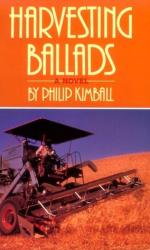|
This section contains 2,067 words (approx. 7 pages at 300 words per page) |

|
Kimball's techniques for structuring this novel, developing his plot lines, and creating memorable characters merit close attention. First of all, it is helpful to consider that a legend is a traditional story told (at least for some of its life) "for true." That is, legends represent actual and memorable persons in actual events at some actual place at a time that is not usually assignable with any precision and is, for the most part, believed by its tellers. Kimball uses a powerful legendary armature for his story—an early medieval Celtic legend about Tristan (variously Tristram, Tristrem), nephew of a King Mark of Cornwall. The King sends Tristan to Ireland in order to bring him back the Princess Isolde, who is to become his bride. However, Tristan falls in love with Isolde and sexually "betrays" his uncle.
This story of divided loyalties has had a powerful hold...
|
This section contains 2,067 words (approx. 7 pages at 300 words per page) |

|




